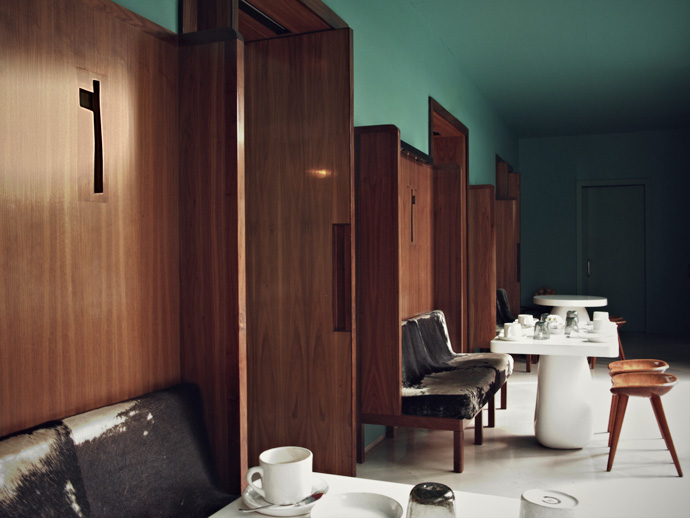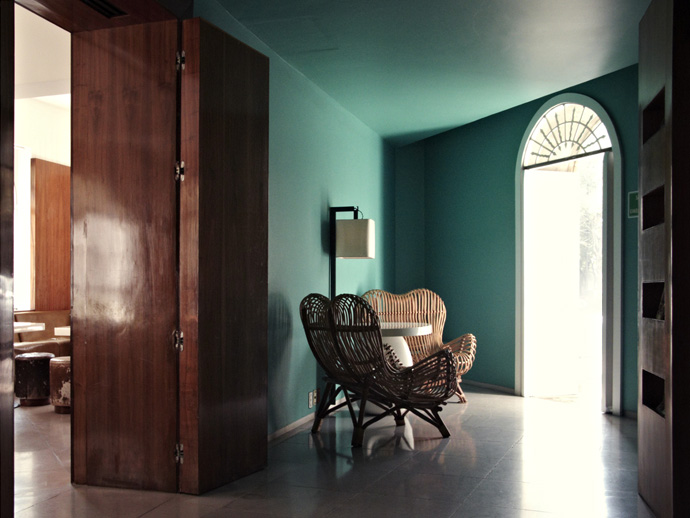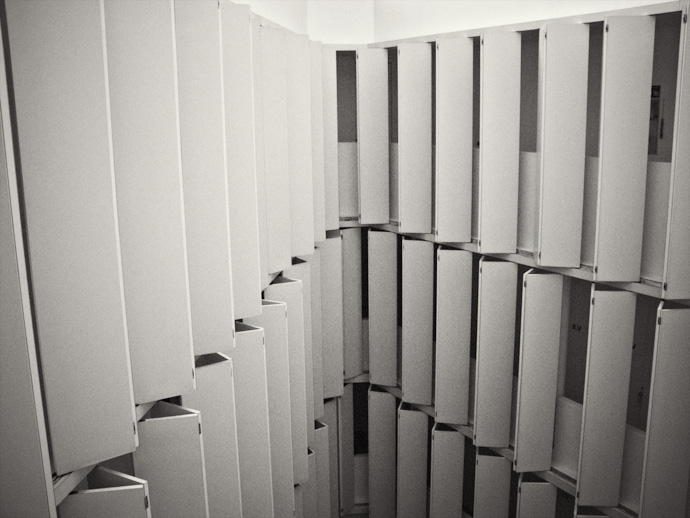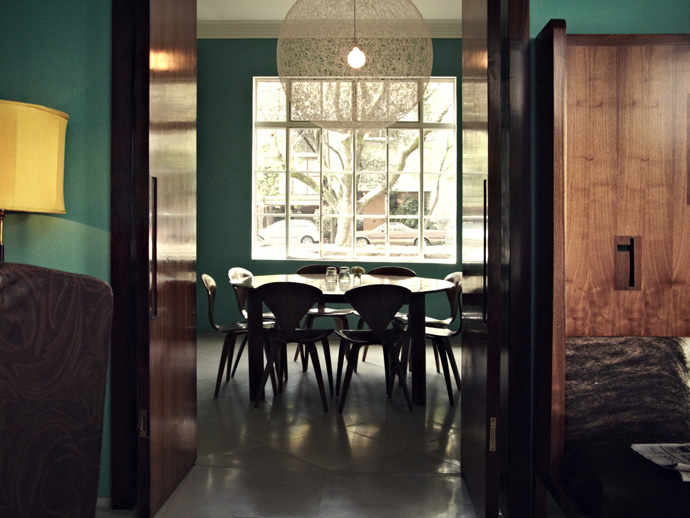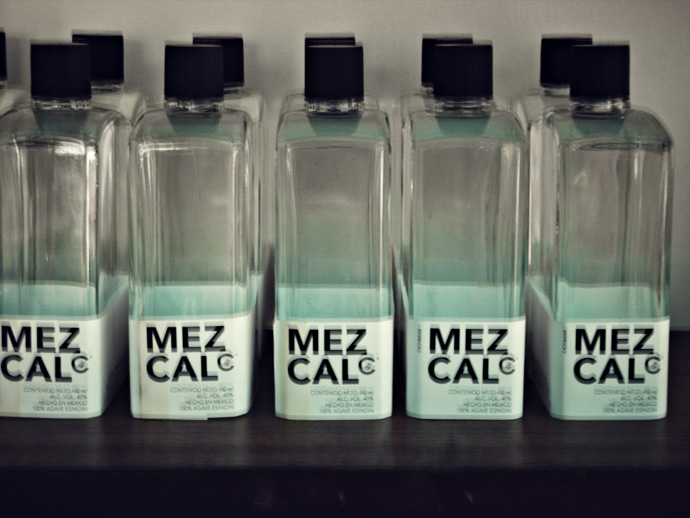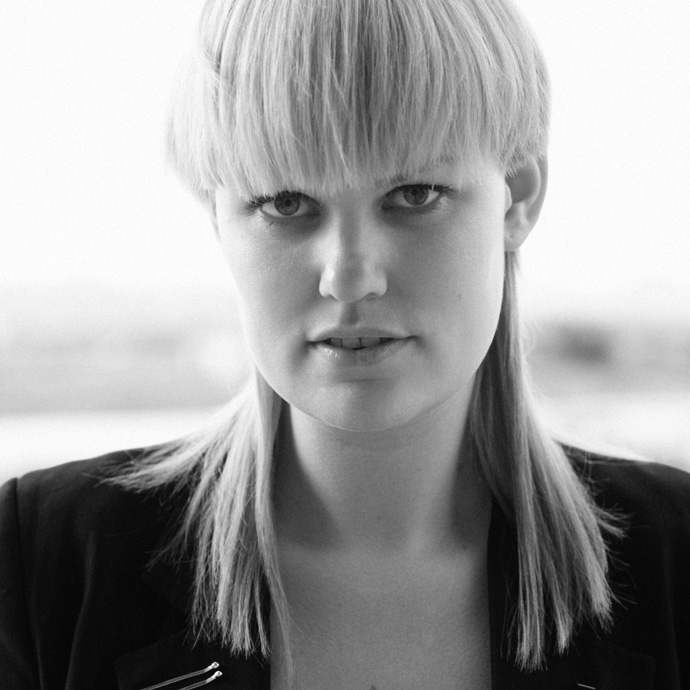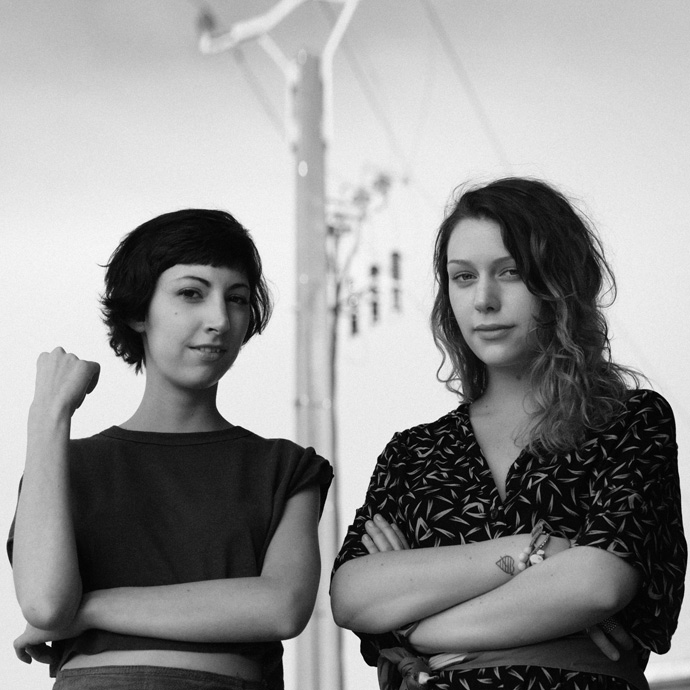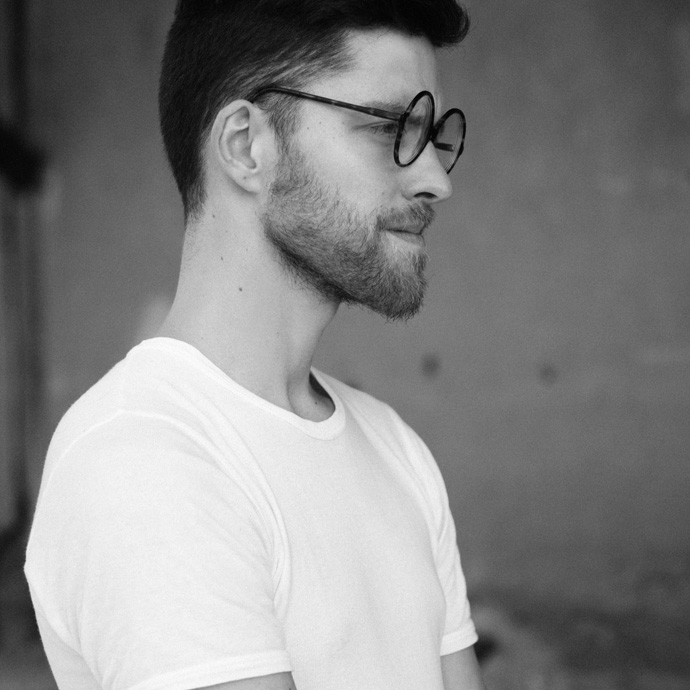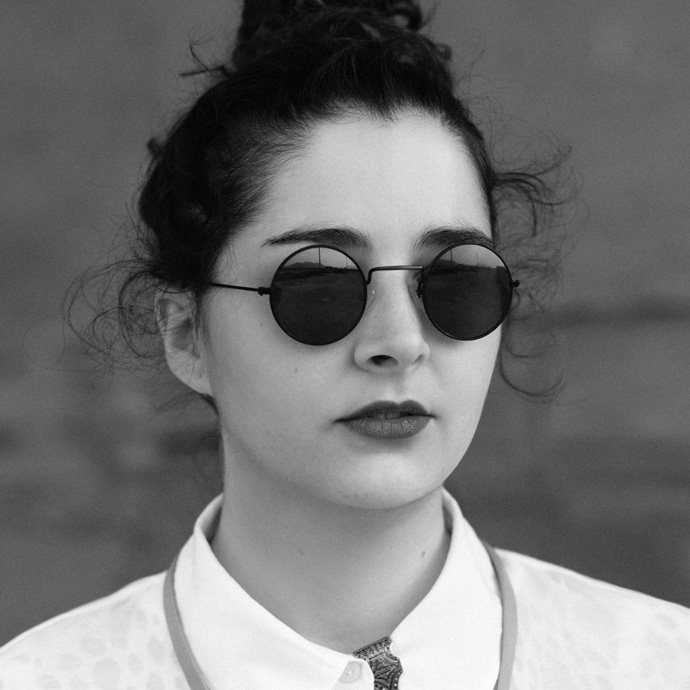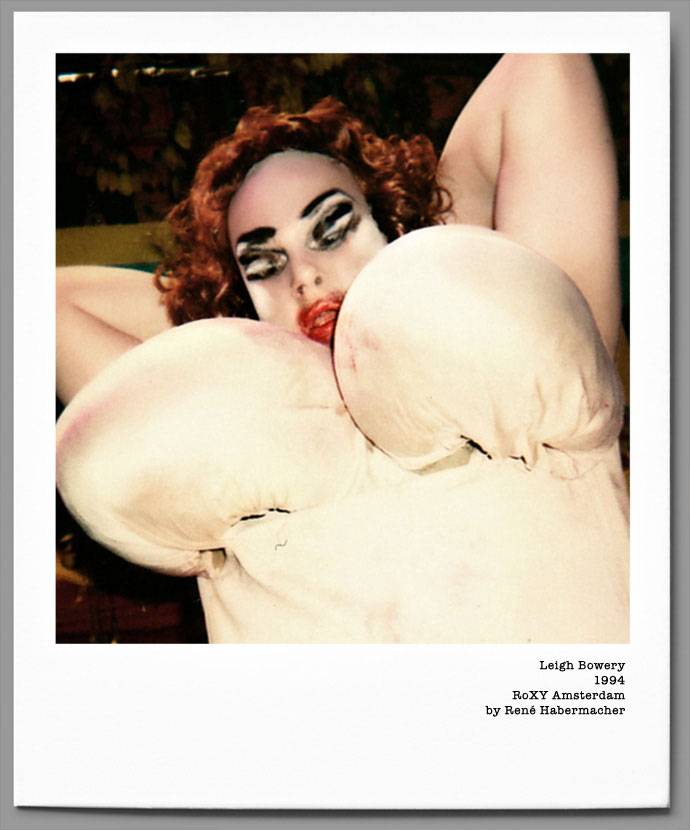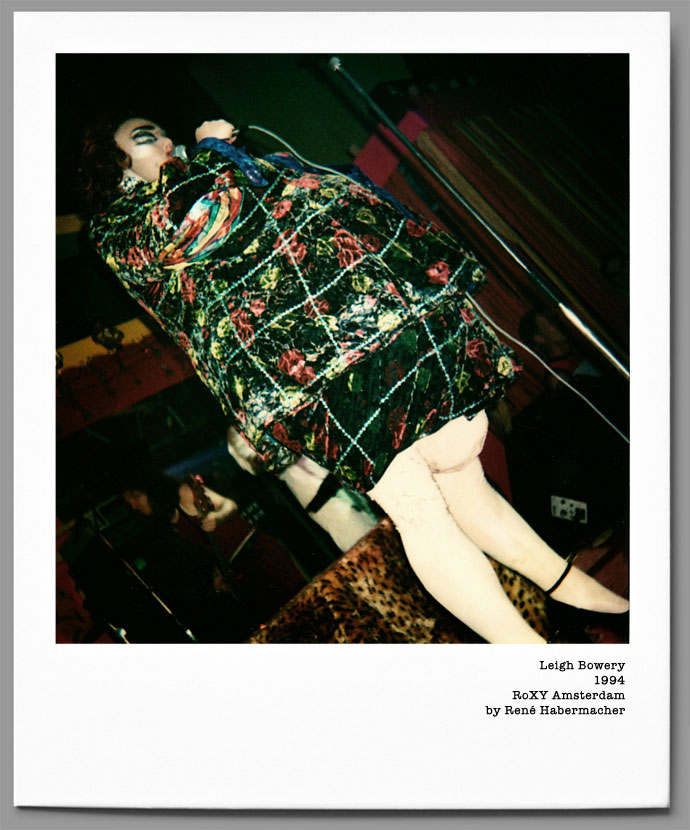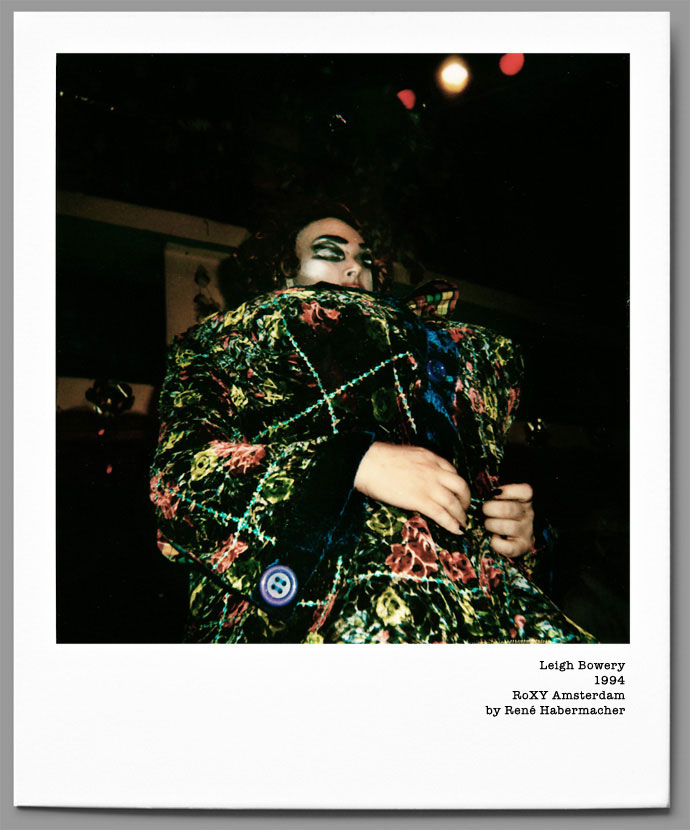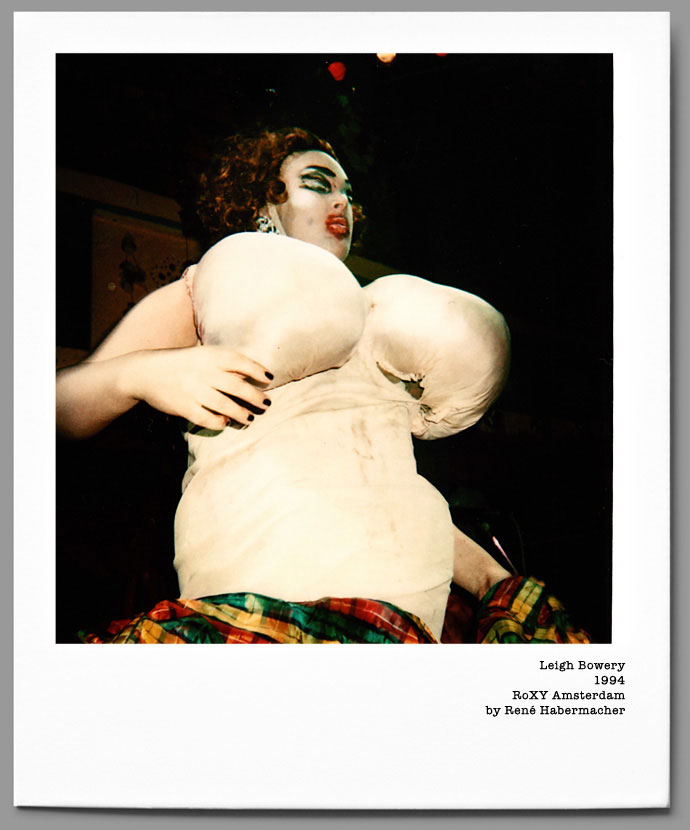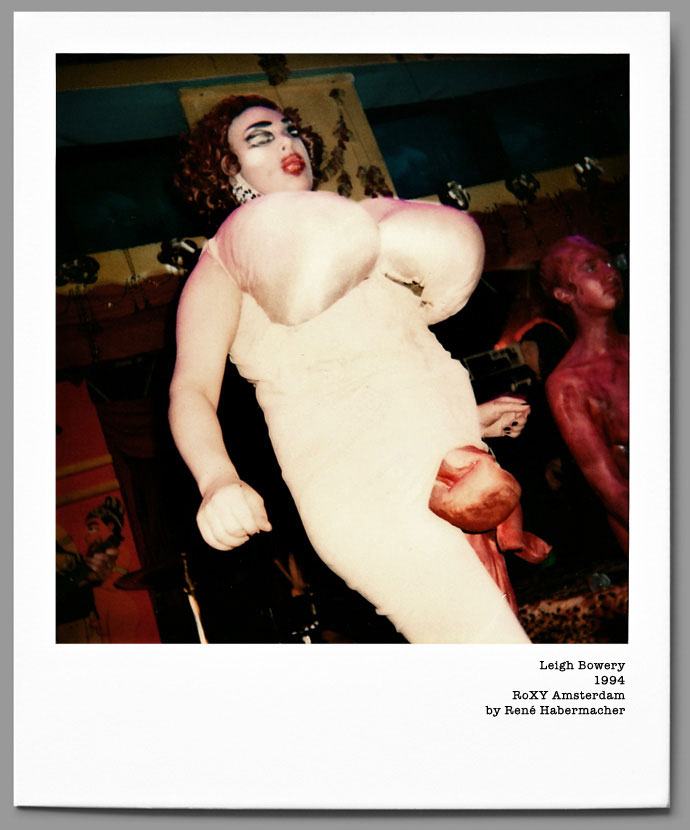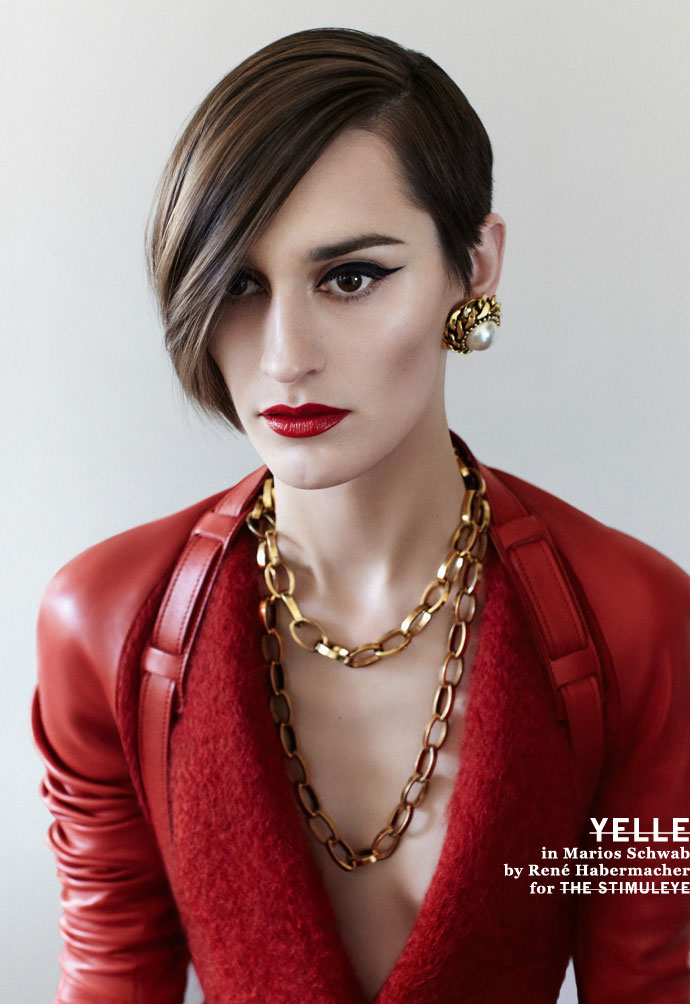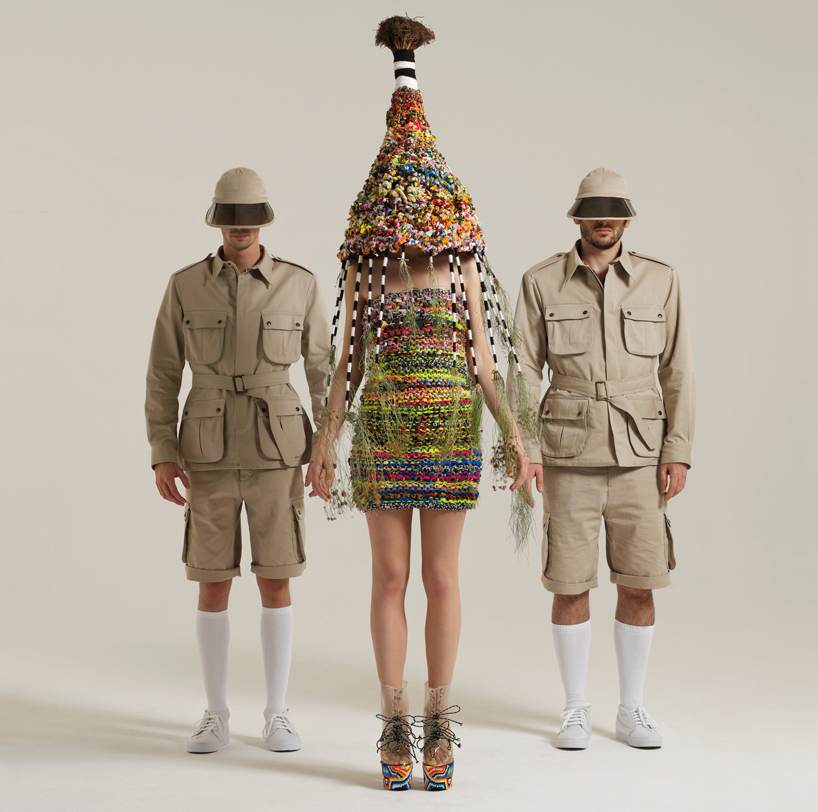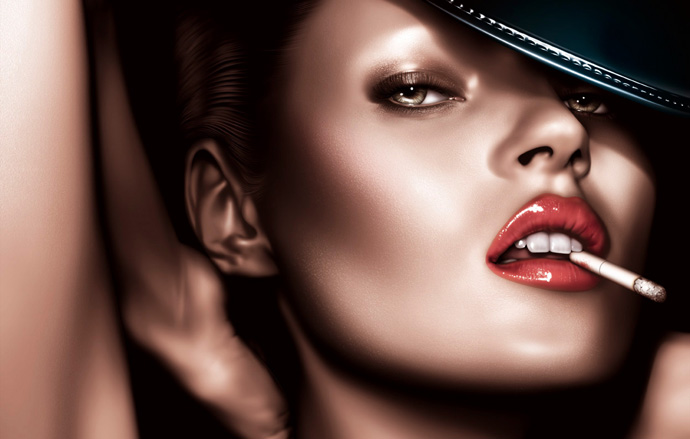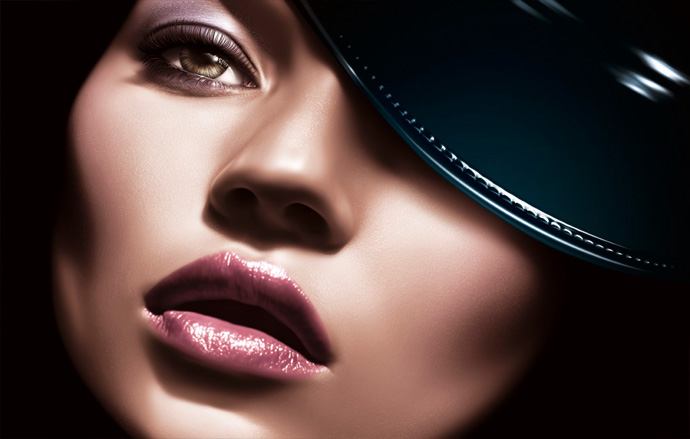-

What will you do for the summer holidays?
-What will you do for the summer holidays? This is a question we here often these days, a perfect conversation piece celebrated from Athens to Paris, London to New York. As a result of this planning many cities will be left deserted at the peak of August. So where do we go?
Travelling, the outlook to discover new and exotic places are something that stimulates us and we look forwards to.
How we could have left that out at The Stimuleye? I don’t know, it’s almost a crime!So we decided to start another series of special places that inspire and enlighten in one or another way. Off track, from a beach bar on a secluded island in Kenya to a spooky ryokan in Japan. And we’ll include food in addition that seems an important part of this experience. Specially considering that Stimuleye Antoine Asseraf had ran a blog around food: FOODGEEK, one of the godparents to The Stimuleye. That might all sound very TAMPOPO – and yes that’s exactly where we’re going with this.
So learn about the addresses for the best Japanese rahmen noodles or Mexican bull-meat tacos, Greek homemade pies, hefty Cuban mojitos or the perfect ring formed bread that’s handed out hung on thread to hold it best, since it’s hot and oven-fresh!
You might stay home during the summer, but nevertheless and hopefully, one of the places we’ll cover in this series starting from tomorrow, will be near you to discover. If you have a tip you believe should be shared and not left out, let us know!
Scene from alltime ultimate Japanese foodgeek movie TAMPOPO. Directed by Jûzô Itami, 1985
-

ATHI-PATRA RUGA: tales of bugchasers, watussi faghags and the afro-womble
-The ascension of young South African artist Athi-Patra Ruga came fast under radar of International attention.
His work, that is often characterized by a dislocated humor, is transcending the divides between fashion, performance and photography and interrogates the body in relation to society, ideology and politics, subverting the western ‘art library’ as he calls it.
The Stimuleye talks to charming Athi-Patra, who was recently featured in the Phaidon book ‘Younger Than Jesus’, a directory of the world’s best artists under the age of 33, about his work and influences.
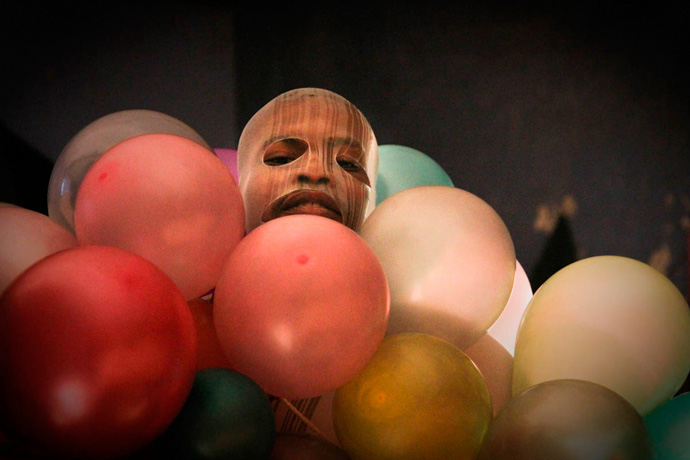 Athi Patra Ruga’s intervention for the X-Homes Hillbrow project with the character of ILUWANE.
Photography by Nadine Hutton
Athi Patra Ruga’s intervention for the X-Homes Hillbrow project with the character of ILUWANE.
Photography by Nadine HuttonRENÉ HABERMACHER: Where are you right now?
ATHI-PATRA RUGA: I’m in my Cape Town studio editing my latest tapestry series and fighting my cats… simultaneously. [laughs] I’m big on cat competitions… my two Russian blues Azange and Shadofax will be taking part so we have been grooming them like crazy… with a few scratches to prove it… hehe.
You’ve just came back from a break – have you got an idea already on what to work on?
At the moment I will be spending the next year creating quietly an extensive body of work revolving around a series of portraits that I will be rendering in tapestry. I have been doing a lot of sittings with various people and doing preliminary sketches. I am editing those now to get started in the next month. I was thinking of titles to name this body or the final exhibition etc: What do you think of :…the do’s and dont’s of bodyworship [laughs]
I am very interested in the power-relations involved in portraiture… especially in response to the ethnographic history involved. I am always concerned with who or what element in the image takes more precedents/importance… the technique or the seater or the artists ego. That argument in my head leads to some lovely renderings.
Your work is known to straddle the divides between fashion, performance and many more disciplines. What is your ultimate goal?
Transcending all boundaries that have been put on who and what one should create.
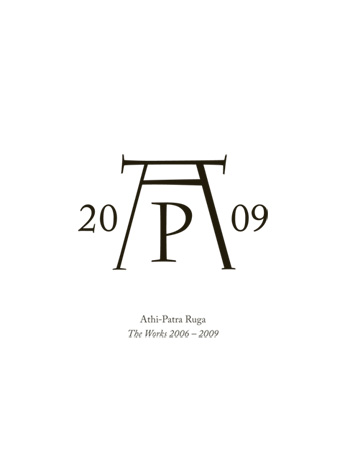
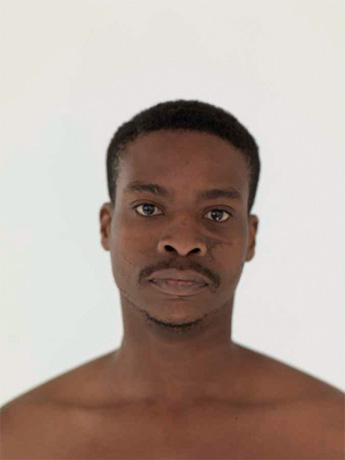 Athi-Patra Ruga's monogram and portrait photographed by Ant Strack
Athi-Patra Ruga's monogram and portrait photographed by Ant StrackThe monogram you use ‘AP’, seems to be derived from Albrecht Dürer?
Nice spotting, yes Dürer is the reference. A big part of the work is appropriation and ultimately subverting the “western art library”. In this case I am always interested in this “I am the one and only”, self-centric way of creating or rather I am totally disturbed by it. The logo is for Athi-Patra Ruga and studios cc. The name of my company and studio. The “and studio” part alludes to the idea that collaboration forms a big part of my practice. I would like to continue with this point.
Does Athi-Patra mean anything specific?
No, it’s a brand like others. And a brand is the highest promise of good quality and superior concept.
It’s two nicknames of my birth name. I’ve been called those names all my life really. It’s as old as I can remember.
So where does the “evil little boy”, as you called yourself come from?
Well I don’t know… I embrace my evils and vices I suppose. As to where it comes from, let’s just say there are a lot of boys and girls think so… at some points I tend to believe it. [laughs]
I was born in a Bantustan, which is a puppet state created by the apartheid government, a dictatorship. In March 1984, on my 13th birthday, Biggie Smalls died. My mom was a midwife, my dad a sports journalist. My parents were gone for long stretches of time and I had to defend myself. It seemed natural, it was one big ball of trauma. I grew up in the townships and during the strikes and boycotts. Many kids [or rather young adults] used to brutalise us for going to suburban/private schools. I spent most of my time indoors as many kids could not cope with me: I was violent in a violent time. Both at home and outside, the country was going through a revolution.
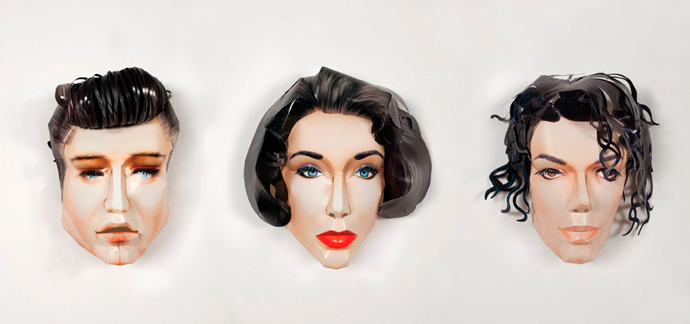 Athi-Patra Ruga: "Idol Death Mask Series" 2009, Modeled Paper, Approx. 27cm x 23cm each
Image courtesy of the artist and whatiftheworld gallery
Athi-Patra Ruga: "Idol Death Mask Series" 2009, Modeled Paper, Approx. 27cm x 23cm each
Image courtesy of the artist and whatiftheworld gallery -

1136 postcards and a smoking nun…
-One family. One postcard for every day apart. The Butlers’ uncommon journey is told by the postcards from a mother to her daughter.
Collaborating with Dutch designer Irma Boom, Jennifer Butler has published an innovative book: JAMES JENNIFER GEORGINA, a taxi yellow, 1200 pages volume in limited editions of 999 copies, parted in three sections with a joint spine, telling a unique story through 1136 postcards and 20 dialogues.
Jennifer travelled the world with her husband James, in an effort to dry him out from his alcoholism, while their daughter Georgina stayed at home with various nannies, but Jennifer sent her daughter 1 postcard per day away – 1136 postcards written from 1989 to 1999.
205 flights taken, 268,162 miles driven, 2 bullfights.
A speeding ticket.
53 unpaid parking tickets.
13 cancelled flights, 1 bomb scare, and 205 churches visited, politics, wars, rising prices, births, funerals, holidays…
Yet what comes forward above all is their relationship.
 JAMES, JENNIFER, GEORGINA by Jennifer Butler. The 3 spine design allows to lay the book flat
JAMES, JENNIFER, GEORGINA by Jennifer Butler. The 3 spine design allows to lay the book flatWe meet at the American Library in Paris, 23 years after the odyssey started.
As they arrive, Jennifer, a former model, on her side her very British gentleman James, holds a copy of the book in her hands, spiked with post-its of matching yellow. She is in full swing, mentioning another book by Allen Fletcher: “Be aware of wet paint,” he wrote in his beautiful handwriting: ‘I don’t know where I am going, but I am on my way’ and it really sums me up: I don’t know ever where I am going, but I have a sense that I am gonna get there!”.
It was in fact Allen Fletcher’s work, and particularly “The Art of Looking Sideways” that made her look differently at the value of the hundreds of postcards she had kept in boxes after 10 years on the road. When in 1999 the drinking of James stopped, so did the postcards. In 2007, Allen Fletcher was only a few months more to live, so he recommended to Jennifer to work on her project with Dutch designer Irma Boom.
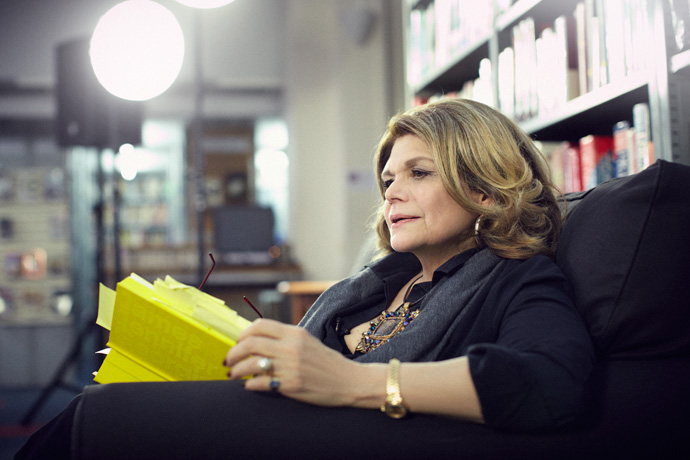 Jennifer Butler at the American Library Paris
Jennifer Butler at the American Library ParisBehind the book, says Butler, lies a passion “for extending the boundaries of what a book can be. And the knowledge that books have to be more, different than ‘information.’ More than being able to download them from the internet” she says. According to her, ‘the book’ is not in the ‘up’ – it’s in the ‘down’:
“The book remains to spread something else: maybe sheer beauty or a much slower, more thought-provoking message” Jennifer expresses in her first correspondence with Irma Boom, sharing the designer’s standpoint on book-making today.
Despite the highly sophisticated and calculated design, JAMES JENNIFER GEORGINA is an emotional matter: “The book is an extension of the content. Irma would not have designed that way for a book about tennis players, or about architecture, whatever. This book is married to the silk screen yellow that she chose, and the yellow canvas. The book is yellow because its full of light and success! […]”
“My husband, Georgina’s father, was drinking himself to death. And with one failed marriage behind me I fought to stave off a second.” James was given only two more years to live, so “to save us I took the difficult decision to leave Georgina at home. We travelled to dry James out and we travelled to shield her from the indignities of drink. Everyday we were apart I wrote to Georgina. If love waits upon a gesture, then my gesture was these postcards. I wanted her to know just who I was and just what I did. They’re a testament to a mother’s love and a sharing of advice, anecdotes, front page news and exotic places” she explains.
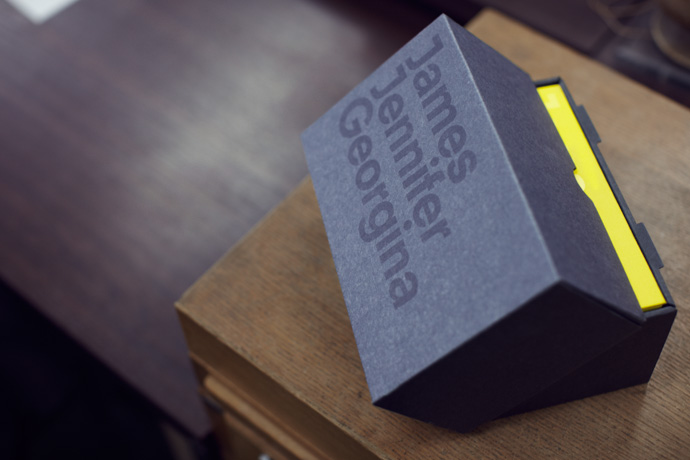 Cassette with the Book of 1200 pages, sewn in yellow cloth
Cassette with the Book of 1200 pages, sewn in yellow cloth“The post cards were never written for public consumption. They were written because I loved doing them.
And I did miss Georgina. And I did feel guilty and it was a way, felt like mothering from a distance.”
For Jennifer, it is actually a very traditional story: “there is a situation, a lot of descriptions with the postcards of a story, there is drama and there are 3 characters. They’re just divided in a very innovative way, because the description and the situation is part 1, the drama is part 2, and the characters are in an album in part 3. Usually when you read about a family or a story or a novel it’s all in one. […] ” She continues, “when people hear the word alcoholism – you know its like a dirty word or somebody survived it. The alcoholism really gave the book its Alfred Hitchcock time element.”
Jennifer admits that there was certainly a bit of irresponsibility concerning the traveling, looking back on it:
“The structure was: let’s go. Like Thelma and Louise. And I was so excited having James sober and clean shaven! He was adorable and generous and he is so knowledgeable about Europe, its history and its wars. It was like being back in university when we were driving! And there was no drink. Because he was so excited being on the road. So it really was not just about keeping him sober. He was sober and I loved the way he was.”
 Postcard from Granada, February 10, 1996
Postcard from Granada, February 10, 1996The book is framing this story of longing guilt and salvation for a wider audience in a fresh way. Despite the 210 postcards that are printed full bore in the volume, accompanied by 400 in miniature, most remarkably, the book also features a series of conversations between James, Georgina and Jennifer: “One guideline that Georgina said, and James backed her 100% up was: there would be no editing! […] “
Irma Boom, according to Jennifer, had approached the book with an enormous integrity and much love for its protagonists had insisted “that we pose the question to Georgina in one of the conversations: what was the sacrifice made by not being there. I said: ‘oh, isn’t this fantastic, Georgina spends every night looking at them.’ My mother said: ‘this is disgusting! my granddaughter is alone a third of her life!’ – of course the people who love you tell you the biggest truths.”
“It was never ever difficult [to talk about our issues as a family]. We’re all very strong characters and I think the love is so loyal that nobody worried about sacrificing love. It was never difficult to talk about the painful subjects: most of all it’s a love story.”
< (more…)
-

HYERES ARE THE DESIGNERS
-Below our office window in the mythical Villa Noailles, people sprawl in the gardens, visit exhibits and discover new designers and photographers. Creative stimulation everywhere. The yearly invasion of Hyères, a sleepy town in the Côte d’Azur, is at its peak, with this micro-festival gaining even more attention by the international press.
On the secluded terrasse in front of us, Raf Simons, the President of this year’s jury, sits in the shade of an umbrella having conversations with numerous journalists, while simultaneously the crowds gather and mingle: headhunters, designers, buyers…
Christopher Kane is here, teamed up with Carla Sozzani of Vogue Italia, Jack and Lazaro of Proenza Schouler came in from NY to have a look at the 10 designers’ work.Its Hyères-storic.
All Photographs by René Habermacher
ODA PAUSMA
Netherlands“It’s very much about contrast: My work is always focused around the vulnerability of women. I play with it, I try to hide it or extend, to show it or protect it. This collection is really about my most vulnerable moment because I ended love after nine years of relationship. I thought I should speak about this in my own language which is fashion. In the beginning it was all black. But later on in the process I was getting better and was seeing the good things about my situation:
Life goes on and there is so much in the world, so I said to myself don’t worry so much! The world is sad enough, so bring some light!
So I brought that into the collection by using white and Swarovski elements and my favorite materials silks and leathers, to work the contrast between fluidity and the protective. The silhouette is very tall from the waist on, so it looks a little surreal and dramatic.”
“The last thing that stimulated me was just my surroundings I guess. I am having a lot of fun lately and I am really enjoying this festival: it gives me energy and I want to move on and work and do something with this feeling of being selected and being a little proud to be so. It’s a good feeling, so why not do something with it.”
JULIETTE ALLEAUME & MARIE VIAL
France“We always help each other on our own collections, but this is our first official collaboration.
We met in high school while studying for our baccalaureate in applied arts. After that we pursued fashion design in different schools–I was at Duperre and Juliette was at Chardon Savard. We lived one year apart and then moved in together in order work together. In fact, the collection that we are presenting in Hyères, is a collection that we made during the time that we shared an apartment.
As for the collection…our starting point was a scarecrow. Using the image of the scarecrow we started to explore the feminine silhouette. Eventually we turned this silhouette upside-down and reworked all of the different facets of it. We were also inspired by cubism so, in the collection, there is the idea of a double body–like one body superimposed on another. For example the shoulders have large proportions and are backwards, the skirts are divided in two and are skewed –so all of the body parts are somehow decontextualized. And we see the real body underneath or in the back, usually highlighted with bright colors. All of this creates disproportional, unhinged silhouettes. Plus, the wooden shoes for the collection create a strange walk”.
“The last thing that stimulated us — Well…the festival! And getting the chance to show our first collaboration. Since we were at different schools, we never had the chance to realize a project together and it is the energy of our duo that motivated us”.
www.artifactcollection.tumblr.com
MADS DINESEN
Denmark“I try to make a spirit army with no nations and no faces. My collection is a lot about shame and pride and the feeling of guilt.
It’s also about how to use the past in the present and the future and learn from it. This is my graduation collection. At the university in Berlin we do one each semester but this is the biggest one and the first with so many pieces. Though it’s a men’s collection, I showed it on women as well in the past.”
“The last thing that stimulated me was the film HOLY MOUNTAIN. That’s one of my favorite films. But right now I am looking a lot at Easter bunnies because I saw DONNIE DARKO. I use a lot of film and music in my work and literature.
Holy Mountain was part of the inspiration for this collection but mostly the colonial history of my home country Denmark. Because when I moved to Germany I found out I didn’t know anything about it, so the research for the collection started in Iceland. I went for a residency to Reykjavik and collected pieces of each culture that was under Denmark. It’s more like a typology of cultural pieces that I tried to put together.”
LEA PECKRE
France“The collection that I am presenting is the collection that I presented for my graduation at Lacambre last year. It’s called CEMETERIES ARE FIELDS OF FLOWERS. I am using a lot elements from cemeteries that interest me like wood, tombstones, mausoleums, bouquets of flowers, the contrast between wrought iron structures and the landscape. These elements, reworked in the materials used for the collection, provided me with really organic shapes–somewhat like trees that climb stones in the cemetery for example. There is a lot of embroidery in the collection as well.
Here in Hyères the defilés are much more structured then at Lacambre. But actually, my show at Lacambre was one of the more simple, subdued shows, so the Hyères show fits really well for me. I like when it is rather simple.”
“The last thing that stimulated me last: I want to finish my collection for Hyères! I am developing new pieces reworking some of the existing pieces and I think it will add a lot to the collection and that it will be better.”
-

25 Hyères + POP
-Less than one week before the launch of the 26th edition of the Hyères International Fashion & Photography Festival, The Stimuleye brings you “25 Hyères” covering the 2010 edition – including interviews of Dries Van Noten, Walter Pfeiffer, Olivier Lalanne, Théo Mercier and many others.
“25 Hyères” premiered on POP, where you can also read an exclusive interview.
THE STIMULEYE presents
25 Hyères
2010 Hyères International Fashion + Photography FestivalVideo and interview on THE POP.COM
A film by Antoine Asseraf
Music by
Lori SchonbergVoice-over by
Géraldine Frainais
James DeenyFilmed by
Antoine Asseraf
Jason Last
Yoann LemoineEdited by
Antoine Asseraf
NEUE / Axelle Zecevic
Yoann LemoineInterviews by
Antoine Asseraf
Jason Last
Diane Pernet -

Out of the box: LEIGH BOWERY
-The other day i was going through boxes of photographs between sheltering sheets of cellophane. I came across a reminiscence from a time when I was obsessed with polaroids: a series of shots that I had taken from artist Leigh Bowery, in what was probably one of his last performances in late May 1994.
Leigh Bowery performing at the RoXY Amsterdam on May 17 1994. Polaroid by René Habermacher.
It was a party at the legendary RoXY club Amsterdam, with Boy George and Robert Owens on the turntables and leading clubbers Sheila Tequila and Stella Stein appearing, to the bemusement of the crowd, nude with pubic wigs only.
That Night Leigh Bowery presented his classc “Birth Show” together with Nicola Bateman-Bowery, whom he had married just 3 days before.As usual for Leigh, the performance, an homage to John Waters “Female Trouble”, would attack the spectators sensitivities- which even worked for the notorious Roxy audience: Leigh would appear to enter the stage in what seemed a rather conservative flower dress to sing with his band Minty, but toward the middle of the song birthed his partner Nicola, who was held under his costume upside down using a specially-designed harness. Nicola then appeared as a very large baby covered in placenta.Leigh died later that year on New Year’s Eve from an AIDS-related illness. A death bed pronouncement by “Modern Art on legs”, as Boy George commented, was: “Tell them I’ve gone pig farming in Bolivia”.
Leigh Bowery and his wife Nicola Bateman-Bowery, then freshly wed. Polaroids by René Habermacher.
It was one of these Spectacles that made the RoXY’s infamous reputation. Not only a club, the RoXY was an Institution. A playground and battlefield for artists. While mingling among the glitterati and club kids of the time I recall seeing there first time the work of Inez Van Laamsweerde and Vinoodh Matadin on a flyer- or a toilet exhibition of Erwin Olafs photographs, an explicit series that was was by far outreached by what was going on in these restrooms…
Founder Pieter Giele’s Motto AB IGNE IGNEM CAPERE (one fire ignites another) came true some years later. The Club that operated from 1987 in a splendid old theatre on Prinsengracht went up in flames the day of Pieter Giele’s Funeral in 1999 and burned down to the ground.
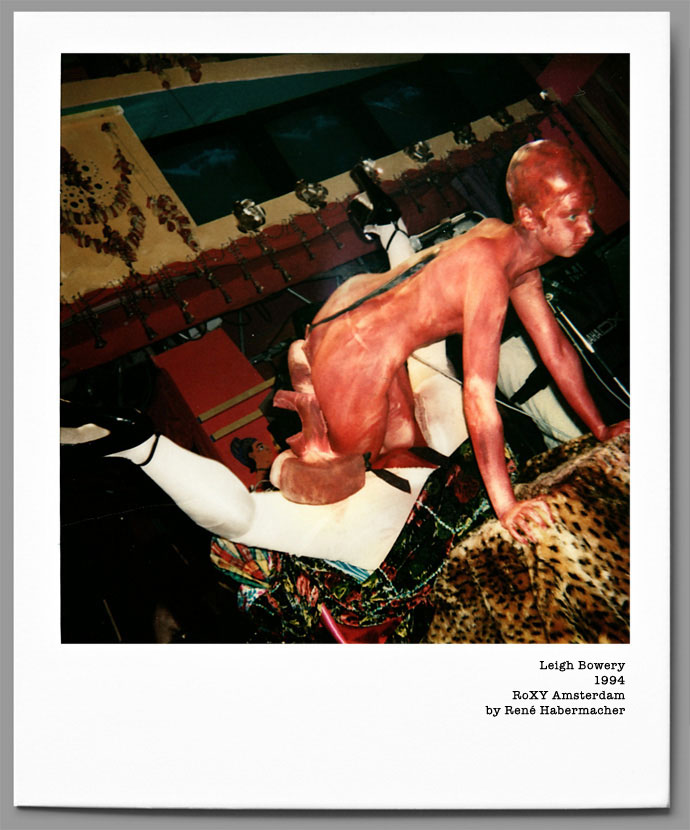
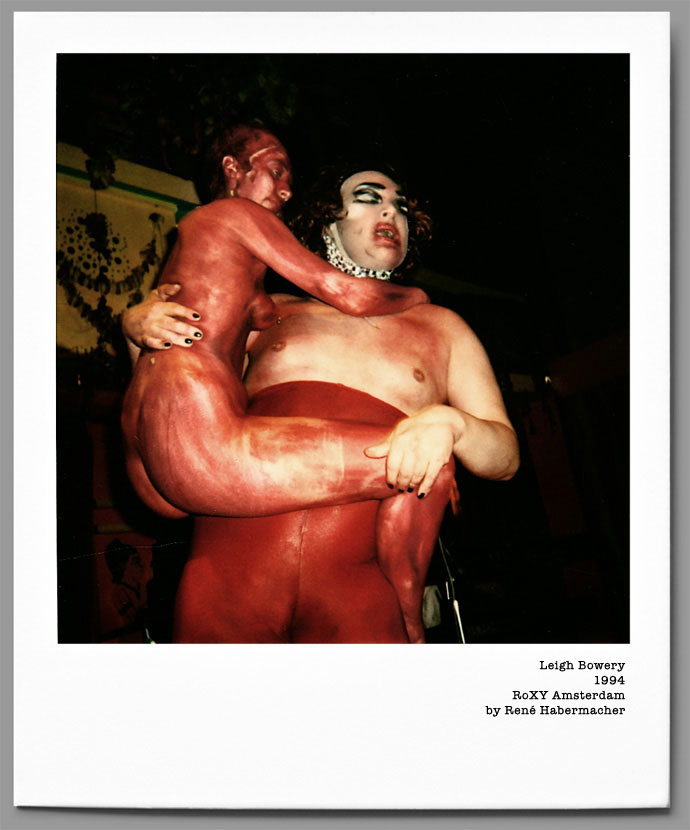
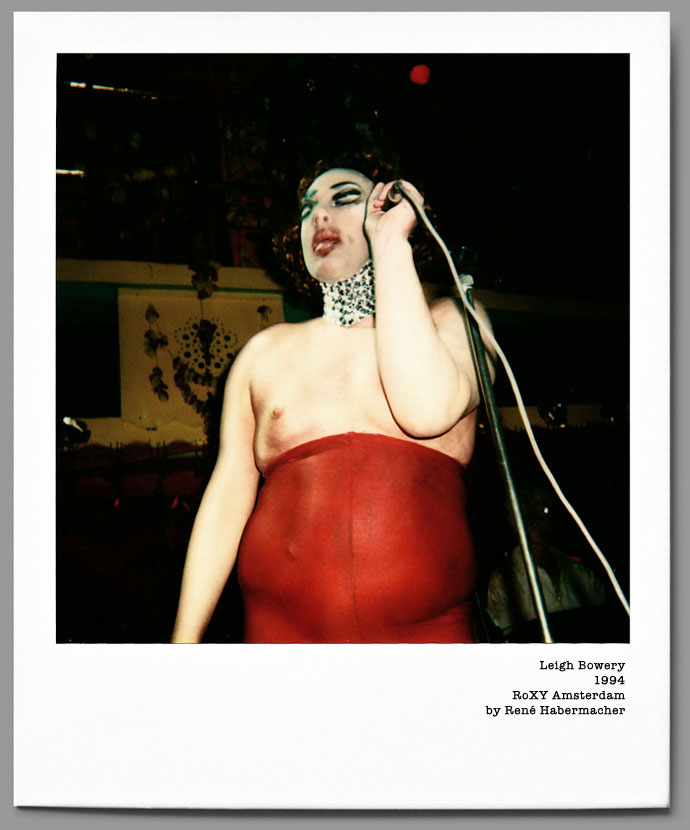
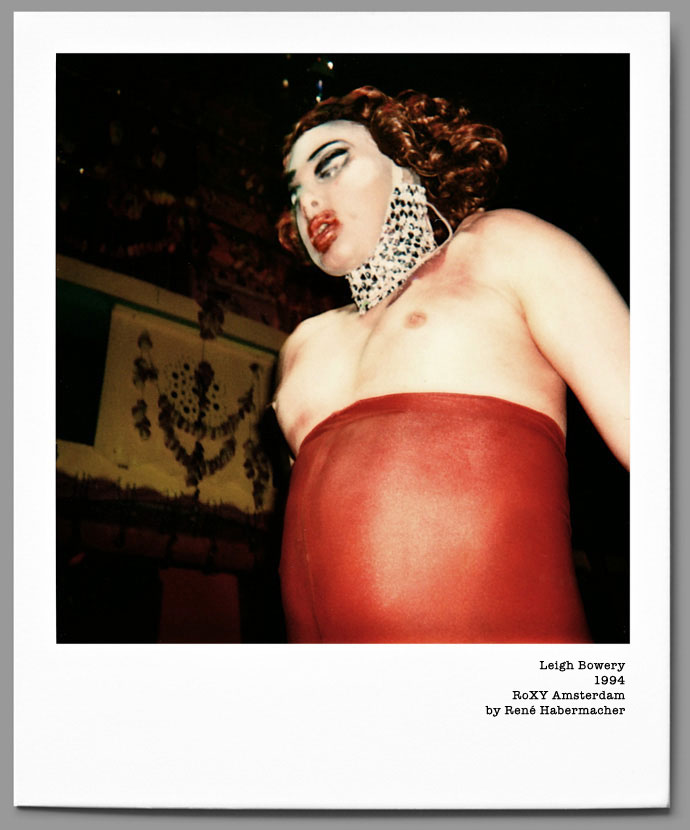
Leigh Bowery on stage with the MINTY. Polaroids by René Habermacher.An exhibition of photos by the club’s photographer Cleo Campert will be on show later this summer at the LUX Photo Gallery Amsterdam from 18 June – 18 July: The RoXY Years / De RoXY Jaren
Cleo Campert: “In this show I emphasize the open sexuality and the indecent exposure which reigned in the famous night club RoXY in Amsterdam in the early nineties.” -

YELLE | 1 | le fun & l’élégance.
-YELLE — Julie, Jean-François and Tanguy — burst onto the music scene in 2006 with their UFO bubble-gum-techno-rap “Je Veux Te Voir”. Since then they’ve collaborated with the likes of Katy Perry, Crookers and Robyn, and seduced audiences all over the world. They’re basically the first French-singing band to achieve international success since the Rita Mitsoukos. Now they return with their second album, SAFARI DISCO CLUB.
For this 3 part interview, René Habermacher shot Julie exclusively for THE STIMULEYE wearing the new MARIOS SCHWAB Fall/Winter 2011 collection. Styled by Ines Fendri, Make-Up by Akiko Sakamoto.
Yelle in Marios Schwab FW 2011. By René Habermacher, styling Ines Fendri, make-up by Akiko Sakamoto.
ANTOINE ASSERAF: Let’s talk about your new album first, SAFARI DISCO CLUB, there’s an immediate visual concept from the name to the album and on to the double music video…
JEAN-FRANÇOIS aka “GrandMarnier”: Actually it’s something that was not there to start with but added at the end. We found the name SAFARI DISCO CLUB very late into the process, at the last minute almost. We thought we should keep things simple, find 2 tracks from the album to start with.
The most inspiring track in terms of visual adaptation was SAFARI DISCO CLUB. This double-theme made us naturally think of Jean-Paul Lespagnard [whose styles had inspired the CE JEU video] and his penchant for double-themes, for juxtapositions. So we discussed it with him, with some references such as the final scene of Luc Besson’s SUBWAY, in explorer mode.
The only thing I remember about this film is Isabelle Adjani’s punk “fuck you” dinner scene…
JEAN-FRANÇOIS: It turns out that Julie’s hair in the video is not far from Isabelle Adjani’s, but that’s pure coincidence…
But the explorer look, that was something stuck in my head — it’s a bit why I started to get into music: I was such a big fan of Jean Reno playing the drums in the subway as a kid, it left an impression on me. So this final scene where they play music dressed like explorers was the starting points for Jean-Paul to work from…
So, do you feel that this SAFARI DISCO name applies to the album as a whole ?
JEAN-FRANÇOIS: It definitely gives a tinge — from the moment we had the title, we listened to the tracks differently, you hear the percussions more. The word “safari” also brings the meaning of “discovery,” which works because we had applied ourselves to making all the songs very distinct. We feel very much part of the compilation generation!
It all works out in the end, but once again it wasn’t thought out that way, we made the songs really one by one.
Safari Disco Club album cover by Grégoire Alexandre. Styling by Jean-Paul Lespagnard.
There are some African vibes in the title track and on LA MUSIQUE…
JEAN-FRANÇOIS: There is a percussion side, coming from the live… Julie has a Tom Bass, we have these suspended drums, we really base ourselves on the percussions for the live show, constructed a bit like a DJ set, with transitions — that really rubbed off on the way we composed for this album.
TANGUY “TEPR”: We didn’t want to copy anything, it’s just a slight tinge, nothing too ‘in your face’…
JEAN-FRANÇOIS: On SDC itself, the most obvious thing in terms of inspiration is the guitar gimmick which is almost Zouk.
Both LA MUSIQUE and SAFARI DISCO CLUB are very instrumental tracks, very percussion-driven, you’re in a sonic trip with words just guiding you on your way…
JEAN-FRANÇOIS: It’s less constructed.
JULIE: Less of a traditional song format.
JEAN-FRANÇOIS: The voice is used more like an instrument, on POP-UP it was more spoken.
TANGUY: Julie’s way of singing changed, not in a calculated way but gradually while writing — it was very spoken and broken on POP UP, on SAFARI DISCO you find this style only on one track really: COMME UN ENFANT. We wanted to try new things.
(more…) -

dimitris papaioannou : the wandering kouros
-THE WANDERING KOUROS
In the last part of our conversation Dimitris Papaioannou speaks about his current project INSIDE that premieres in April at the Pallas Thatre in Athens
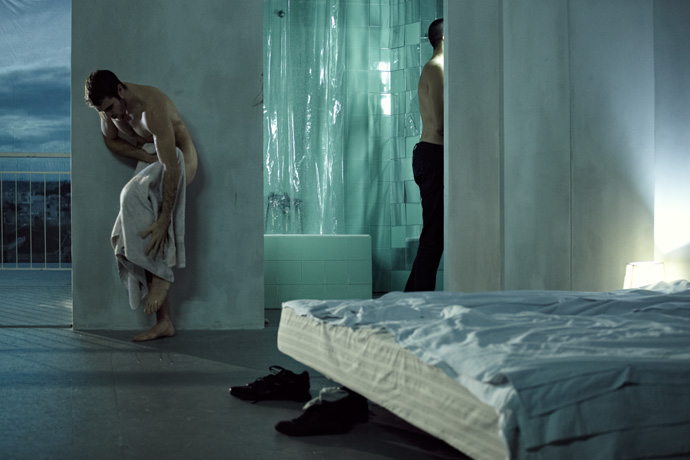 Scene from INSIDE by Dimitris Papaioannou. Photo by René Habermacher
Scene from INSIDE by Dimitris Papaioannou. Photo by René Habermacher
RENE HABERMACHER: Let’s speak a little about your new play: INSIDE.DIMITRIS PAPAIOANNOU: INSIDE is a work born where two situations come together. The first is a show that runs endlessly without beginning, middle or end. The second is a situation in which audiences are allowed to visit at any time they like, sit wherever like, and are free to leave and return as many times as they like. The theatre doors open at 17:30 and close at 23:30. The stage action begins before you come in, and continues after you leave. Nobody sees a beginning, or an end. The play recycles itself, but never repeats itself.
We are playing with the concept of empty time. INSIDE focuses on personal time, that series of moments we experience when we return home. In a way it monumentalises these moments: the very fact of eating, or the very fact of showering, or the very fact of undressing to go to sleep. And without any assistance from civilisation — without a book, a magazine, radio or television.
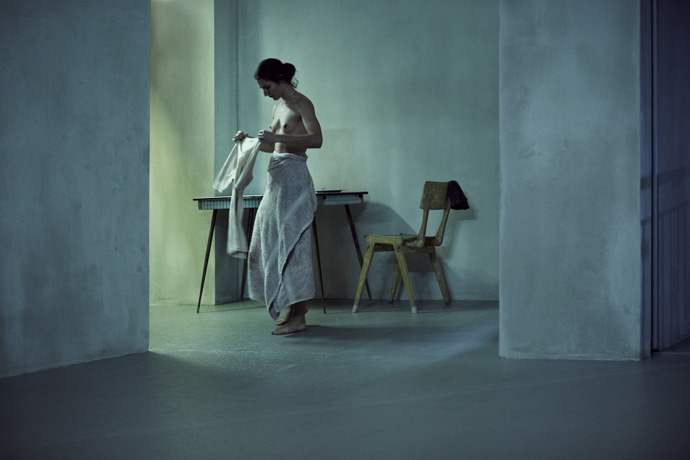
Scene from INSIDE by Dimitris Papaioannou. Photo by René HabermacherWhat you see is a composition, a series of everyday private movements and actions that are exactly the same, repeated multiple times by 30 performers in various overlapping and recycled versions. These phrases come together, then one remains, then another five come into play. It’s about density and overlapping forms. An ongoing open composition that encourages audiences to create their own compositions, depending on how many times, how long and from which angle they choose to see the play.
This is an idea that intrigues me, that people in the centre of the city will visit a theatre to watch others doing things that they do themselves, and the people they watch are themselves watching the city through the window. This is something I feel is charming.
It is these two elements — that of the city documentary exploring a place common to all, and the freedom given to audiences as to how they can view the work — that come together in my view to create this project. The subject of it is one level, the form of it is another, and both are conceived at the same time. This is what interests me, and this is why I am doing it.
So this is what INSIDE is.
I don’t know what people are going to do and how audiences will make use of this game that I am proposing. It’s something of an experiment, we’ll see how it’ll work.
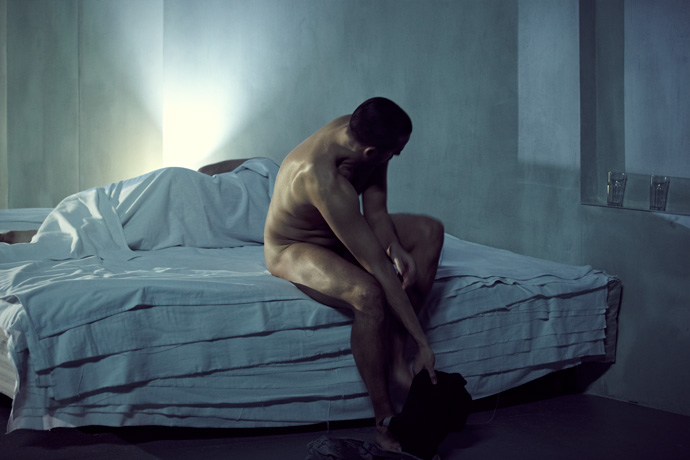
Scene from INSIDE by Dimitris Papaioannou. Photo by René HabermacherIt reminds me of the photographs of Eadweard Muybridge for example, or the performances of Marina Abramović.
Abramović has these elements of patience, and of exhausting the human body. She has done one performance [“The House with the Ocean View”, 2002] where she actually lived in a gallery, in public view, which resembles what I am doing. But my work is not performance art, it requires rehearsal and it will repeat itself everyday; it’s not like an algorithm that evolves organically in front of our eyes. That’s why we are doing it in a theatre and not in a museum or gallery, because it is a kind of a twisted version of a performance, but not performance art. It is something that is rehearsed, that has an acting tone, and is not personal like most performance art, which is about a specific person doing something in that moment. Of course, this experiment of mine would not have been possible if performance art had never existed.
INSIDE reminds you of Muybridge because it gives you the chance to see and imprint in your head the successive stages of a movement, just like Muybridge did in his photographs. They also share the element of observing people: how people move, how they walk.
It’s like filming a documentary in the savannah: you film for hours following a lion and then you have 15 minutes where the lion sits doing nothing. We are taking these 15 minutes of footage of the lion making slight movements and superimposing it many times, through shifts in the timing, to create an entire play out of it. It is still the lion. It’s still about observing the lion. The lion does nothing new. But hopefully we will be magnetised by these successive of layers of the same action taking place, and start meditating upon our own lives.
That was a good example! We are becoming very abstract and intellectual now.
I can’t help it!
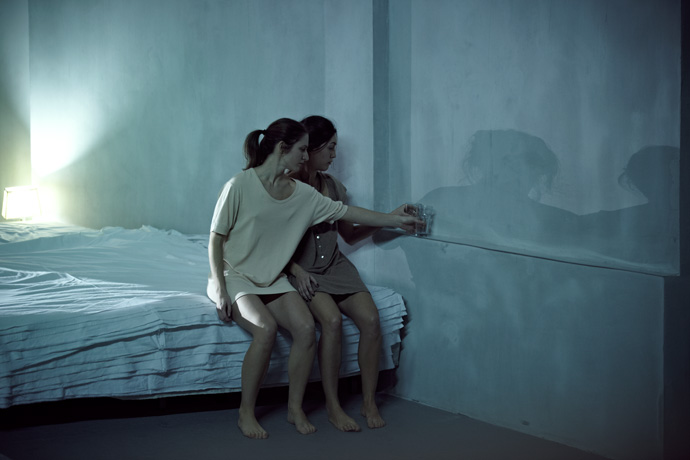
Scene from INSIDE by Dimitris Papaioannou. Photo by René HabermacherI understand that this idea for INSIDE has been in your head for quite a while now.
It was the first thing that came into my head after 2004, the first thing I wanted to do and found worth doing. Back then I had the idea of this room, and of creating a composition from a single simple series of movements by multiplying and superimposing it. Within the framework of a two-hour show, this seemed ridiculous — this limitation would have strangled the idea, forcing the whole thing to have a conclusion, a climax, a very specific story to tell. It would also seem like a joke to audiences, setting them up for something with a beginning, middle and end and then presenting them this thing repeating itself and multiplying, waxing and waning before their eyes, without giving them the chance to leave whenever they want. So I didn’t do it.
Last year, I made the leap in relation to the way the theatre itself could function: I could create a very long show and give people the freedom to come and go as they please. I had to deal with the logistics of the thing, but then suddenly a form was created in which this content could take place. Because once you liberate the audience from having to see it all, then you also liberate the show itself to develop in ways that do not necessarily lead to a defined conclusion. So that is why it is happening now, because it took me some time to conceive the framework within which this could function.
Official trailer for INSIDE.
There are some recurrent elements that I always see on your mood boards, in your work, in your references, and last week I saw a key element once again: the kouros.
Yes!
That one always returns, either standing or fallen.
I deeply apologise, I cannot help it! Some things come back again and again, you know, until everybody will just be exhausted by it and nobody will ever visit anything I do ever again!
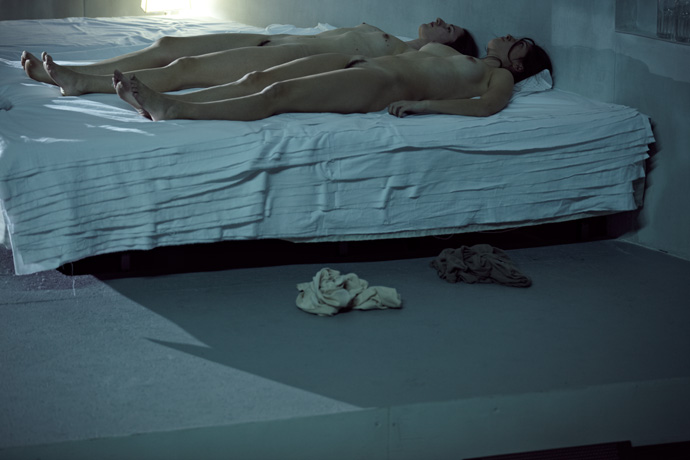
Scene from INSIDE by Dimitris Papaioannou. Photo by René HabermacherWould you say you have an obsession with what the kouros represents: beauty, nobility, youth?
It’s not about youth. It just happens that I work with people who are quite young. I’ve never flinched from the idea of worshipping the structure of a human body: I like the body. I like looking at human bodies. There is something about beauty that charms me and puzzles me and magnetises me.
I have a certain understanding of the human presence, of the human body situated in space and against the vastness of the sky of existence. I usually have people looking at landscapes. I think in every play I’ve done, I’ve had someone looking at something. This is something that maybe comes from me: I tend to breathe things in by looking at them.
When the kouros came to ancient Greece from ancient Egypt, it took one giant step forward: extracted from his background, the axis of his body shifted over his two feet. So for the first time in history, there was a life-size sculpted human figure that could be seen from all sides. And this coincides in ancient Greek history with the dawn of poetry, of lyrical poetry, where people started to talk about how they feel. For me, the kouros is more than a celebration of youth and beauty. I think its more the celebration of wandering. A figure standing on earth, wondering about its own position in space. Wandering in space: where do we stand, where are we? You know, it’s a common puzzle for us humans, and it attracts me. My work reflects that I guess.
Is that enough, dear? Do you want more?! [laughs]
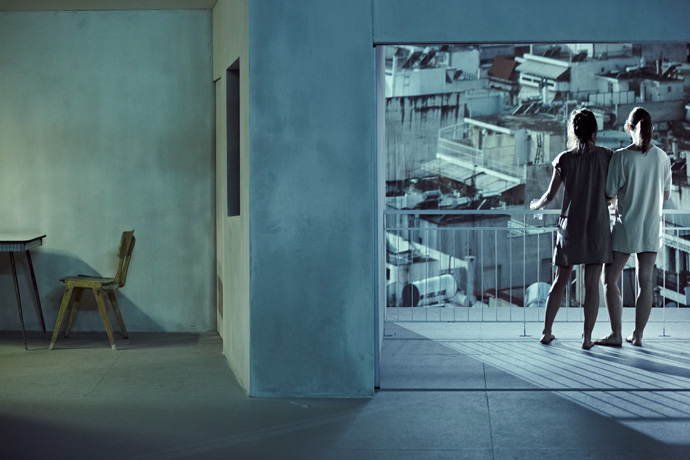
Scene from INSIDE by Dimitris Papaioannou. Photo by René Habermacher -

dimitris papaioannou : spatial and human relationships
-SPATIAL AND HUMAN RELATIONSHIPS
Continuing the conversation with Greek choreographer Dimitris Papaioannou, this second part concentrates on his post olympic work as MEDEA2 and the influences of butoh and his native Athens in his work.
 Scene from MEDEA2 by Dimitris Papaioannou. Photo by René Habermacher
Scene from MEDEA2 by Dimitris Papaioannou. Photo by René HabermacherRENÉ HABERMACHER: Over the years your journey has brought your work to ever-larger audiences. Recently, with your play MEDEA2, you revisited the past. How was that experience?
DIMITRIS PAPAIOANNOU: It challenged me for a number of reasons. If you follow my journey, I was violently exposed to the general public with the success of the Opening Ceremony of the Athens Olympic Games. In order to recover from the experience, I had to take a two-year break.
The first thing I chose to do after this pause was a show called 2. 2 was actually an attempt to pick up where I had left off before the ceremony, to return to my roots and re-evaluate my work. I constructed a very personal show on a large scale because I was offered the opportunity to do so, and I tried to restart my interrupted line of development in an unusual way.
After this experience many question marks arose, and I realised that I was still exposed to a much larger public than I was used to. I had the feeling that there was a new kind of communication being created that was both charming and dangerous. I needed more time before taking my next step.
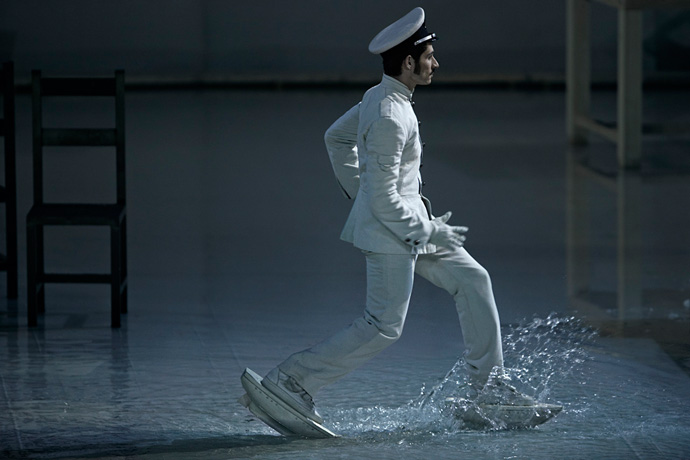 Jason crossing the sea. Scene from MEDEA2 by Dimitris Papaioannou. Photo by René Habermacher
Jason crossing the sea. Scene from MEDEA2 by Dimitris Papaioannou. Photo by René HabermacherMany people were suddenly exposed to my work through the Olympics, but of those who had a real interest, many were too young to have experienced MEDEA. So I returned to MEDEA, attracted by the idea of presenting it again with an all new cast, and approaching it with a new idea: to take the passion out. I wanted to reconstruct it, refine it, clear it out, strip it of anything unnecessary, drain the blood from the performance and deliver it in the cleanest form I could manage. That was my intention with MEDEA2.
Having done that, I could continue with new work, first NOWHERE and now INSIDE. This is a completely new phase, where I am tending to create shows with no protagonists and no characters. The crowd is the element I’m focusing on now, using it in a more open structure in order to create images involving spatial and human relationships.
Excerpts of MEDEA 2 accompanied by interview with Dimitris Papaioannou.
-

dimitris papaioannou : a pasolinian touch
-Dimitris Papaioannou’s work as a choreographer has significantly reshaped the Greek performing arts landscape.
With his directing of the Athens 2004 Olympic Games Ceremony, a ground-breaking success, he played his way straight in the heart of the spectators, hailed a “triumph” by TIME MAGAZINE and THE TIMES of LONDON.In 2005 Dimitris Papaioannou was awarded the Golden Cross of the Order of Honour by the President of the Hellenic Republic for outstanding artistic achievement. For his following shows “2″ and MEDEA2 enjoyed an unprecedented run in the Greek capital, each with over 100 000 tickets sold. This accelerated development came not without controversy. With his latest play INSIDE Dimitris returns to his experimental roots.
THE STIMULEYE met with him during a break of rehearsals in Athens, to speak about his new play and look back to his point of departure.
Following the first part of three on the conversation with Dimitris Papaioannou, accompanied with exclusive pictures by René Habermacher.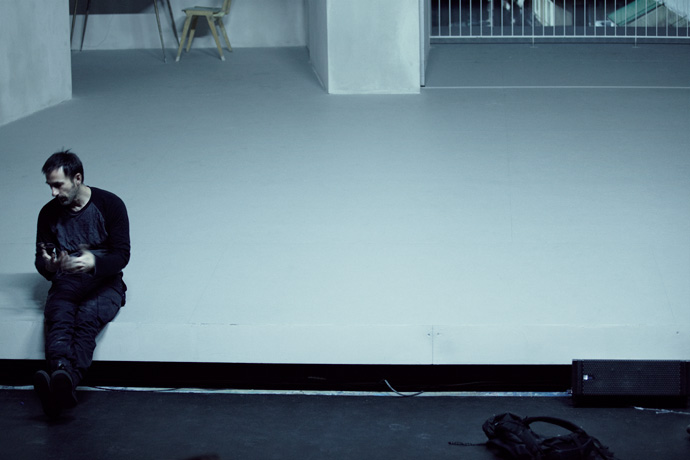 Dimitris Papaioannou on the rehearsal set for his new play INSIDE. Photo by René Habermacher
Dimitris Papaioannou on the rehearsal set for his new play INSIDE. Photo by René Habermacherpasolinian touch
DIMITRIS PAPAIOANNOU: I’ll be right with you — I’m just making a coffee!
RENÉ HABERMACHER: You’re freshly shaven! You look very 19th-century with your moustache.
I am from the 19th century honey, I’m very old!
It’s been a while since we had time for a talk, since I left Athens and you last visited Paris. We met only briefly during the rehearsals for your new play INSIDE, which you’re currently working on. You spent last Spring in New York. Tell me about what you did there.
I was there from March until June on a Fulbright Artist’s Scholarship. A mid-career scholarship obviously… [laughs]
Actually in a way I was studying the story of performance art [with Laurie Anderson at The Kitchen NYC] and developing my Final Cut Pro skills, as well as experiencing a little more of New York life, now that I’m a mature boy and things are different!
How was it returning to Athens after that?
For me it was a blessing because I discovered that I had left New York when I was still under construction. It’s the perfect place to be when you are like that, but in this phase of my life what I found there was a little more superficial than I would have liked. The Athens I returned to was in complete economic crisis and emotionally depressed, but still I was deeply relieved to spend summer back home.
Dimitris, I know you were born in Athens, but we’ve never talked about your childhood.
I was born and grew up in Athens, in a lower-middle class family. My parents made financial sacrifices so that I could go to a very expensive school, the Athens College. Then I had to run away from home because my parents wanted me to live the life of a straight architect. But I was a gay man, and I wanted to be a painter. I became the student of the Greek painter Yannis Tsarouchis* (1) in the old fashioned way, where painters trained people in their atelier. It was there I was introduced to true art. I had been painting since I was a child, but it was when I met Tsarouchis that I realised what painting really was. Later I entered the Athens School of Fine Arts.
* (1) : Yannis Tsarouchis, 1910-1989 One of the most important twentieth-century Greek painters, Yannis Tsarouchis portrayed and helped to define modern Greek identity. The deeply sensual painter was much influenced by the French impressionists and often depicted sailors, soldiers and the nude male body in erotic situations.
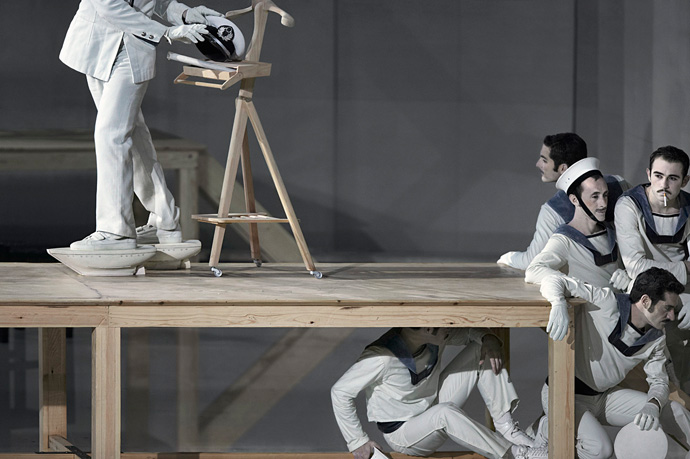 The departure of Jason in reference to Yannis Tsarouchis. Scene from MEDEA2 by Dimitris Papaioannou
The departure of Jason in reference to Yannis Tsarouchis. Scene from MEDEA2 by Dimitris PapaioannouHow did you meet Tsarouchis?
I knocked on his door. I showed him some my paintings and asked for his comments. He was not cruel, as he could have been, about those awkward early drawings — instead he was very polite. My college had organised an exhibition of my work in the building’s library, so I invited Tsarouchis to see my work up close. The next day he called me and invited me back to his house, after which he allowed me to watch him paint, and would give corrections on my paintings. I became his student.
How did this encounter shape you? Did it leave a mark on your artistic work?
Well, your first mentor leaves a strong mark on your life. I grew up in a house that had no contact with artists, there wasn’t a single painting on the walls. My parents weren’t very fond of art, it wasn’t part of their lives. I felt like an alien, wanting to enter this world. So Tsarouchis was the first artist I really saw working, and I realised that the life of an artist is possible and, to my eyes, very charming. I felt at home in a way. And he was a great painter. He had a quality that interests me a great deal: he could make magic with the humblest of materials — he could make roses out of toilet paper, use wires to make small sculptures. The thing I think I have learned from him is that you can make poetry out of garbage.
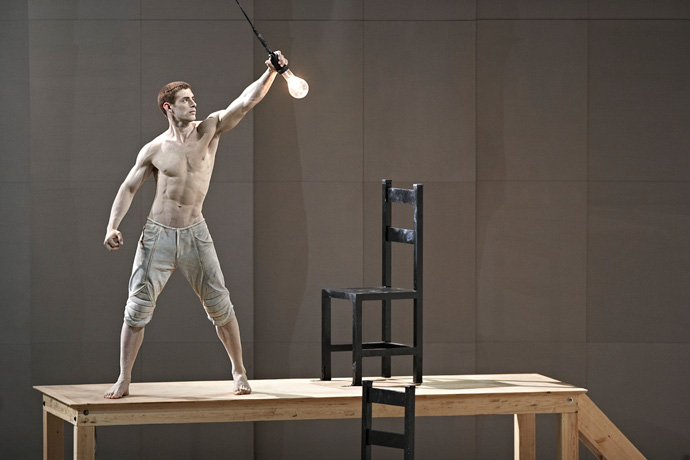 “Helios”. Scene from MEDEA2 by Dimitris Papaioannou. Photo by René Habermacher
“Helios”. Scene from MEDEA2 by Dimitris Papaioannou. Photo by René Habermacher -

kate moss as the night porter, take 1.
-Marc Jacobs’ tour-de-force ending for Paris Fashion Week, featuring handcuffs, elevators, and some obsessive ladies, almost made everyone forget about the Galliano debacle. The image now engraved in everyone’s mind is that of Kate Moss closing the Night Porter-style show, cigarette in mouth. But however powerful it was to see it live, somehow this image had already been floating in collective consciousness…
“Kate” by René Habermacher for Numéro Paris, Make-up by Linda Cantello.
Before he became a photographer, René Habermacher was as an illustrator — who was already a bit of a photographer. Numéro Paris, under the helm of Babeth Djian and Thomas Lenthal, frequently commissioned him fashion and beauty series made up entirely of photorealistic illustrations, “unreal” photos.
“Unreal” because there was no shooting, no camera. Only René, an idea, dozens of image references, hundreds of hours of drawing and airbrushing, and in this case, the advice of master make-up artist Linda Cantello, of Roxy Music fame.
So for this 2003 beauty series, René imagined Kate Moss as heir to Charlotte Rampling’s SS-cap-wearing and cigarette-smoking character from the 1974 film The Night Porter.
Where it gets interesting is that these images then found their way into the work of Terry Richardson (NSFW below), who thought that Kate was missing something else in her mouth…
(more…)

